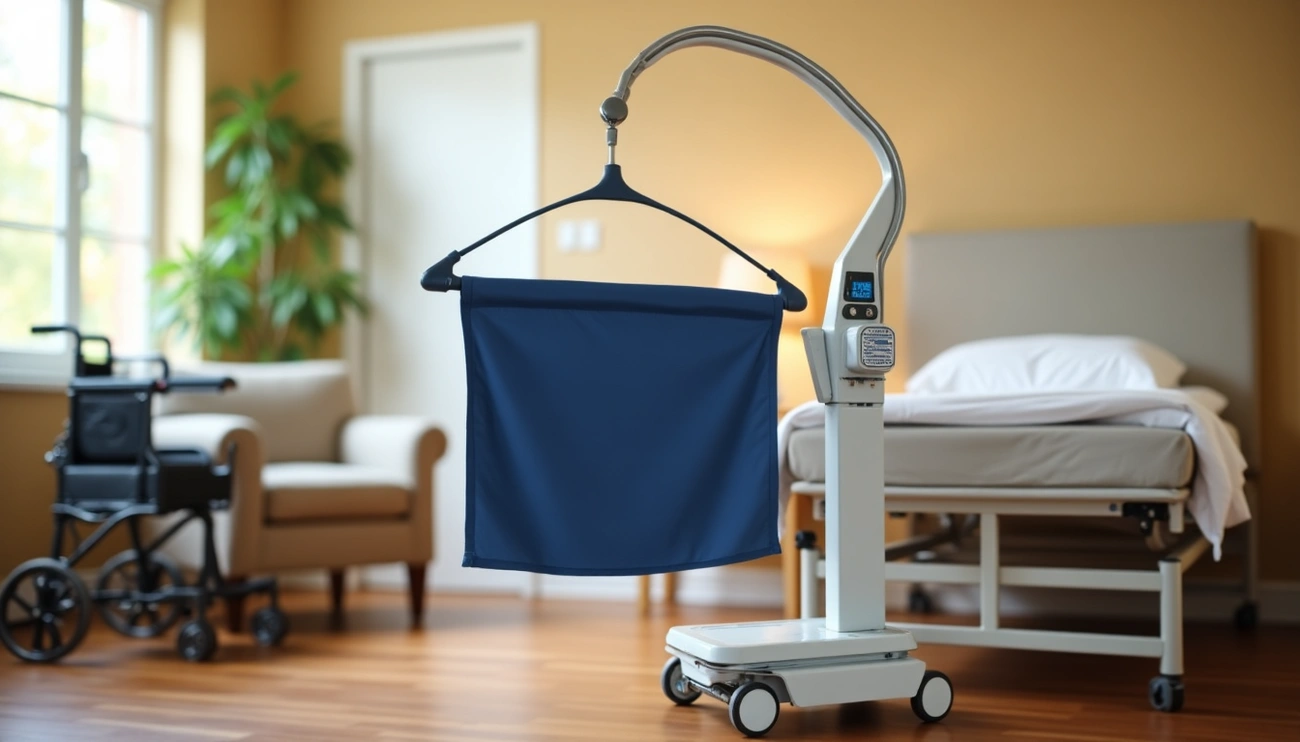As we watch our parents age, we often face difficult decisions about their care and well-being. Moving parents into assisted living is a choice many of us grapple with, balancing our desire to maintain their independence with the need for increased support. This transition can be emotionally charged, involving downsizing, adjusting to a new environment, and redefining family roles. We understand the complexities of this journey and the impact it has on both parents and adult children.
In this guide, we’ll walk you through the key steps to get someone into assisted living with compassion and care. We’ll explore how to recognize when it’s time for this change, strategies to have open conversations with your parents, and tips to research and select the right facility. Additionally, we’ll share insights on making the move smoother and supporting your parents’ emotional adjustment. Our goal is to provide you with practical advice and caregiver support to navigate this significant life transition.
Recognizing When It’s Time for Assisted Living
As our parents age, we often find ourselves wondering if it’s time to consider moving them into assisted living. This decision isn’t easy, but recognizing the signs can help us make the best choice for their well-being and safety. Let’s explore some common indicators that suggest it might be time to consider this transition.
Common signs
We need to pay attention to changes in our parents’ daily lives. If we notice they’re having trouble with activities like showering, dressing, or eating, it might be time to think about assisted living. These tasks, known as activities of daily living, are crucial for maintaining independence. When they become challenging, it’s a clear sign that extra support could be beneficial.
Another red flag is a noticeable decline in personal hygiene. If we see our parents wearing dirty clothes, having unkempt hair, or neglecting oral care, it could indicate they’re struggling to take care of themselves. This self-neglect isn’t just about appearance; it can have serious health implications.
Changes in eating habits are also important to watch for. Weight loss, a lack of appetite, or a kitchen filled with expired or unhealthy food can all point to difficulties in maintaining proper nutrition. This is especially concerning as adequate nutrition plays a key role in managing chronic conditions and maintaining overall health.
Health and safety concerns
Safety becomes a major concern as our parents age. Falls are a leading cause of injury among older adults, and if we notice our parents are experiencing frequent falls or near-misses, it’s time to consider a safer living environment. Assisted living facilities are designed to minimize these risks and provide prompt assistance if accidents do occur.
Memory issues are another crucial factor to consider. If our parents are forgetting to take their medications, missing important appointments, or showing signs of cognitive decline, they might benefit from the structured environment and medication management provided in assisted living.
Chronic health conditions that are worsening over time can also indicate a need for more comprehensive care. If we find ourselves struggling to manage our parents’ health needs, it might be time to partner with professionals who can provide round-the-clock support.
Caregiver stress
As we care for our aging parents, we must also be mindful of our own well-being. Caregiver burnout is a real and serious issue that can affect our physical and mental health. If we’re feeling constantly exhausted, anxious, or depressed, it might be a sign that we need additional support in caring for our parents.
Caregiver stress can manifest in various ways, including chronic fatigue, feelings of hopelessness, and difficulty relaxing or sleeping. We might also notice changes in our own behavior, such as increased irritability or reliance on unhealthy coping mechanisms.
It’s crucial to remember that taking care of ourselves is not selfish; it’s necessary to provide the best care for our parents. If we’re experiencing burnout, it might be time to consider assisted living as a way to ensure our parents receive the care they need while allowing us to maintain our own health and well-being.
Having the Conversation with Your Parents
Having a conversation with our parents about moving into assisted living can be emotionally charged and challenging. We understand that this discussion is filled with an array of emotions, but it’s crucial to approach it with compassion and care. Let’s explore some strategies to make this conversation more productive and less stressful for everyone involved.
Choosing the right time and place
We need to be thoughtful about when and where we have this conversation. It’s best to pick a time when we can sit down together without interruptions. In-person conversations are ideal if possible, as they allow for better emotional connection and understanding. We should choose a quiet, comfortable place where our parents feel at ease, avoiding busy or noisy environments that might make it difficult to focus on the discussion.
It’s important to remember that this shouldn’t be a one-time conversation. We might need to have several talks over time to ease our parents into the idea of assisted living. Starting these discussions early, before a critical situation arises, can make the process smoother and less stressful for everyone involved.
Addressing concerns and fears
When talking about moving into assisted living, we need to be prepared to address our parents’ concerns and fears. Many seniors worry about losing their independence or having their homes taken away. We should listen actively to their thoughts and feelings, showing empathy and respect for their emotions.
It’s helpful to use positive, non-threatening words and speak in a soft, unassertive tone. We want to avoid making our parents feel like they’re being lectured or told what to do. Instead, we can frame the conversation around how assisted living can support their independence and improve their quality of life.
We should also be ready to provide information about modern assisted living communities and how they differ from the nursing homes our parents might remember. Offering to visit some communities together can help alleviate fears and give them a clearer picture of what life in assisted living could be like.
Involving other family members
Getting the entire family on the same page can be challenging, but it’s important for a smooth transition. Before having the conversation with our parents, we should talk to our siblings or other close family members. This helps ensure we’re all in agreement and can present a united front.
When involving other family members, we need to be mindful of existing family dynamics. It’s crucial that everyone feels heard and included in the decision-making process. If there are disagreements among siblings, we might consider bringing in a professional mediator to help lead a meaningful conversation.
During family discussions, we should make sure each person has a chance to speak and express their feelings. Even if we don’t all agree, it’s important to listen to what everyone has to say. We can also consider creating a transition team to visit different communities and keep everyone informed, which can help foster cooperation and consensus.
Throughout this process, we must remember that our parents have the right to make their own decisions, as long as they’re still able to make rational choices. Our role is to be their advocates and support them in making this life transition as smooth as possible.
Researching and Selecting an Assisted Living Facility
When it comes to moving our parents into assisted living, we need to carefully research and select the right facility. This process can be overwhelming, but with the right approach, we can find a place that meets our loved ones’ needs and provides them with the care they deserve.
Types of facilities
We’ll encounter various types of assisted living facilities during our search. Some are designed for seniors who need minimal help with medical care or ambulation, while others cater to those requiring more specialized services. It’s crucial to understand that each senior is unique and may need specific services. We should look for a facility that provides a nurturing, comfortable, and home-like environment while offering supportive services tailored to our parents’ needs.
Important amenities and services
When researching assisted living facilities, we need to pay attention to the amenities and services they offer. Most facilities provide assistance with activities of daily living (ADLs) such as managing medications, grooming, and dressing. However, we should also look for communities that emphasize social activities and outings as an integral part of their culture.
Some key services to consider include:
- Housekeeping and laundry
- 24/7 on-site staffing for safety and emergencies
- Medication management
- Personal care assistance
- Transportation services
- Social and recreational activities
It’s important to ask about the specific services included in the base fee and any additional costs for extra care or amenities. We should also inquire about the staff-to-resident ratio and the qualifications of the caregivers.
Costs and payment options
Understanding the costs and payment options is crucial when selecting an assisted living facility. The national median cost of assisted living is around USD 4,807 per month, but prices can vary significantly depending on location, services, and amenities. We need to be prepared for potential costs ranging from USD 30,000 to nearly USD 100,000 per year.
To afford assisted living, we can explore various funding sources, including:
- Personal savings and retirement funds
- Long-term care insurance
- Veterans benefits (for eligible wartime veterans and their spouses)
- Medicaid (for low-income seniors)
- Life insurance policies (through life settlements)
- Reverse mortgages (if applicable)
It’s important to note that financial assistance for assisted living is often limited and may not cover 100% of the costs. We should carefully review the contract or agreement provided by the facility to understand all fees, including any community service fees that may be required.
By thoroughly researching and considering these factors, we can make an informed decision when moving our parents into assisted living. This process requires patience and careful consideration, but it’s essential for ensuring our loved ones receive the care and support they need during this significant life transition.
Making the Transition Smooth and Positive
Moving our parents into assisted living can be a challenging process, but with careful planning and support, we can make the transition smoother and more positive for everyone involved. Let’s explore some key strategies to help our loved ones adjust to their new home.
Downsizing and packing
One of the biggest challenges when moving parents into assisted living is downsizing their belongings. We need to start this process early, ideally two months before the move-in date. It’s crucial to involve our parents in the decision-making process, allowing them to choose which items they want to keep. This helps them maintain a sense of control and eases the emotional impact of letting go of possessions.
To make downsizing more manageable, we can use the four-box method. As we go through each room, we’ll sort items into four categories: keep, donate, sell, or discard. This approach helps streamline the process and prevents indecision. Remember to be sensitive to our parents’ feelings during this time, as parting with belongings can be emotionally challenging.
Personalizing the new space
Creating a familiar and comfortable environment in the new assisted living apartment is essential for our parents’ emotional well-being. We can start by obtaining a floor plan of the new space to determine what furniture and personal items will fit comfortably. It’s important to bring cherished belongings that hold sentimental value, such as family photos, artwork, or favorite pieces of furniture.
To make the new space feel like home, we can arrange familiar items in a way that mimics their previous living arrangements. This can provide a sense of continuity and comfort. We might also consider taking our parents shopping to select new items that reflect their style and preferences, adding a fresh touch to their new home.
Establishing a routine
Helping our parents establish a daily routine in their new assisted living community can significantly ease the transition. We can work with the staff to create a schedule that incorporates our parents’ preferences and previous habits. This might include regular meal times, social activities, and exercise programs.
It’s important to familiarize our parents with the layout of the community, including the locations of common areas, dining rooms, and activity spaces. This knowledge can help them feel more comfortable and independent as they navigate their new environment.
By focusing on these key areas – downsizing, personalizing the new space, and establishing a routine – we can help our parents adjust to their new home in assisted living. Remember, this transition takes time, and it’s normal for both our parents and us as caregivers to experience a range of emotions. With patience, understanding, and ongoing support, we can make this move a positive step towards ensuring our parents’ comfort and well-being in their new chapter of life.
Conclusion
Moving our parents into assisted living is a significant life transition that requires careful thought and planning. Throughout this process, it’s crucial to keep our parents’ well-being and dignity at the forefront of our decisions. By recognizing the signs that it’s time for assisted living, having open conversations with our parents, and thoroughly researching facilities, we can make this change as smooth as possible.
The journey doesn’t end with the move itself. To help our parents adjust, we need to focus on personalizing their new space and helping them establish a routine. Remember, this transition takes time, and it’s okay to have mixed feelings about it. With patience, understanding, and ongoing support, we can ensure our parents feel comfortable and cared for in their new home, giving us peace of mind about their safety and quality of life.
FAQs
Why do I feel guilty about placing my mother in an assisted living facility?
It’s common to experience guilt when moving a parent into assisted living due to making significant decisions on their behalf or the stress of the move itself. These feelings are normal, and you can alleviate them by seeking support from others and educating yourself about the benefits of senior living options.
What qualifications must one meet to enter an assisted living facility in North Carolina?
In North Carolina, entering an assisted living facility requires a medically documented need for the level of care such facilities provide. This typically involves needing help with daily activities like bathing, dressing, or mobility tasks.
How can I help my parents adjust to life in an assisted living facility?
Helping your parents adjust to assisted living can include several strategies: allow them time to adapt, visit regularly or give them space initially, involve a support network, prepare for possible setbacks, be ready for emotional challenges, and make their new space feel like home by including personal items and limiting unfamiliar elements.
How should I discuss the move to assisted living with my parents?
When talking to your parents about moving to assisted living, ensure they don’t feel excluded from the decision. Discuss various options with them, be mindful of their emotional ties to their current home, and highlight the advantages of assisted living, such as maintaining independence in a supportive environment.




